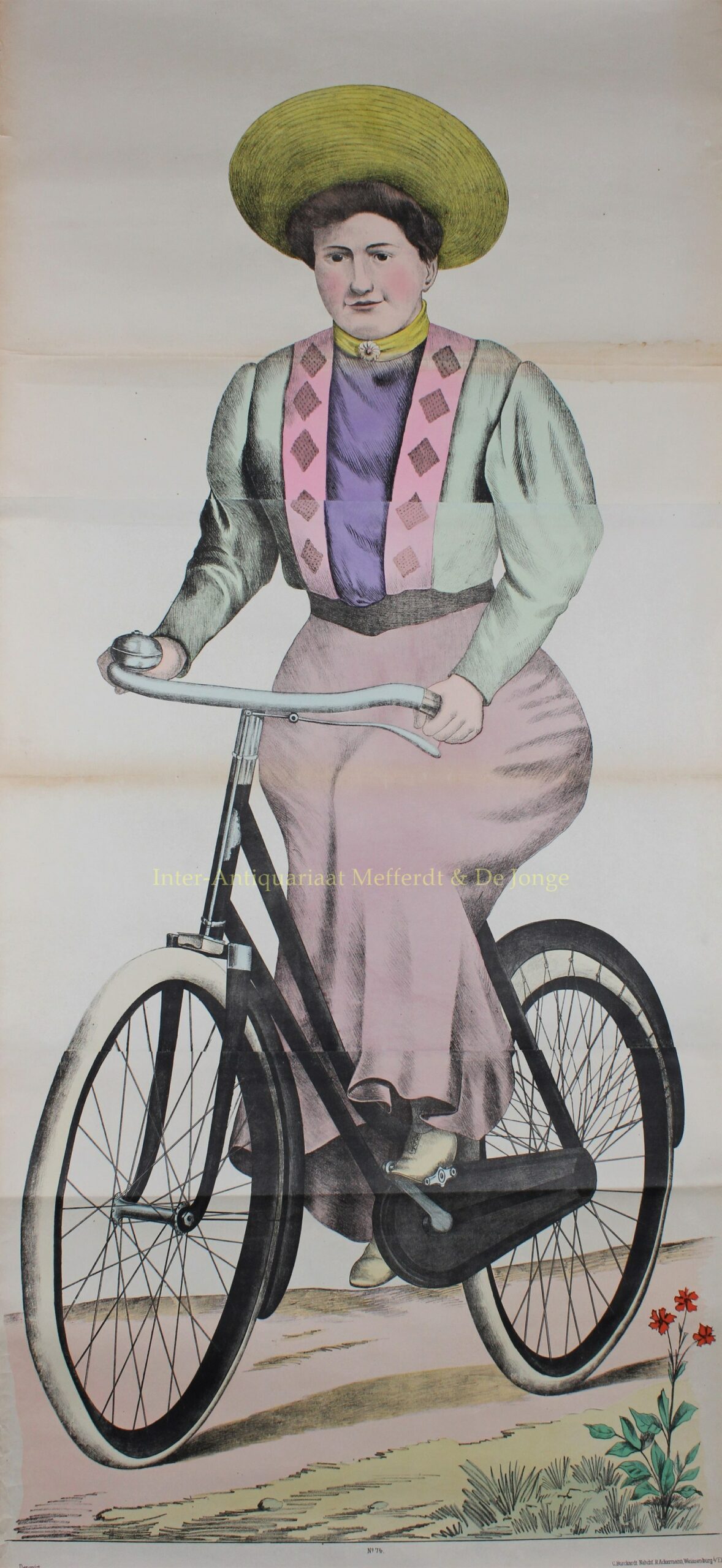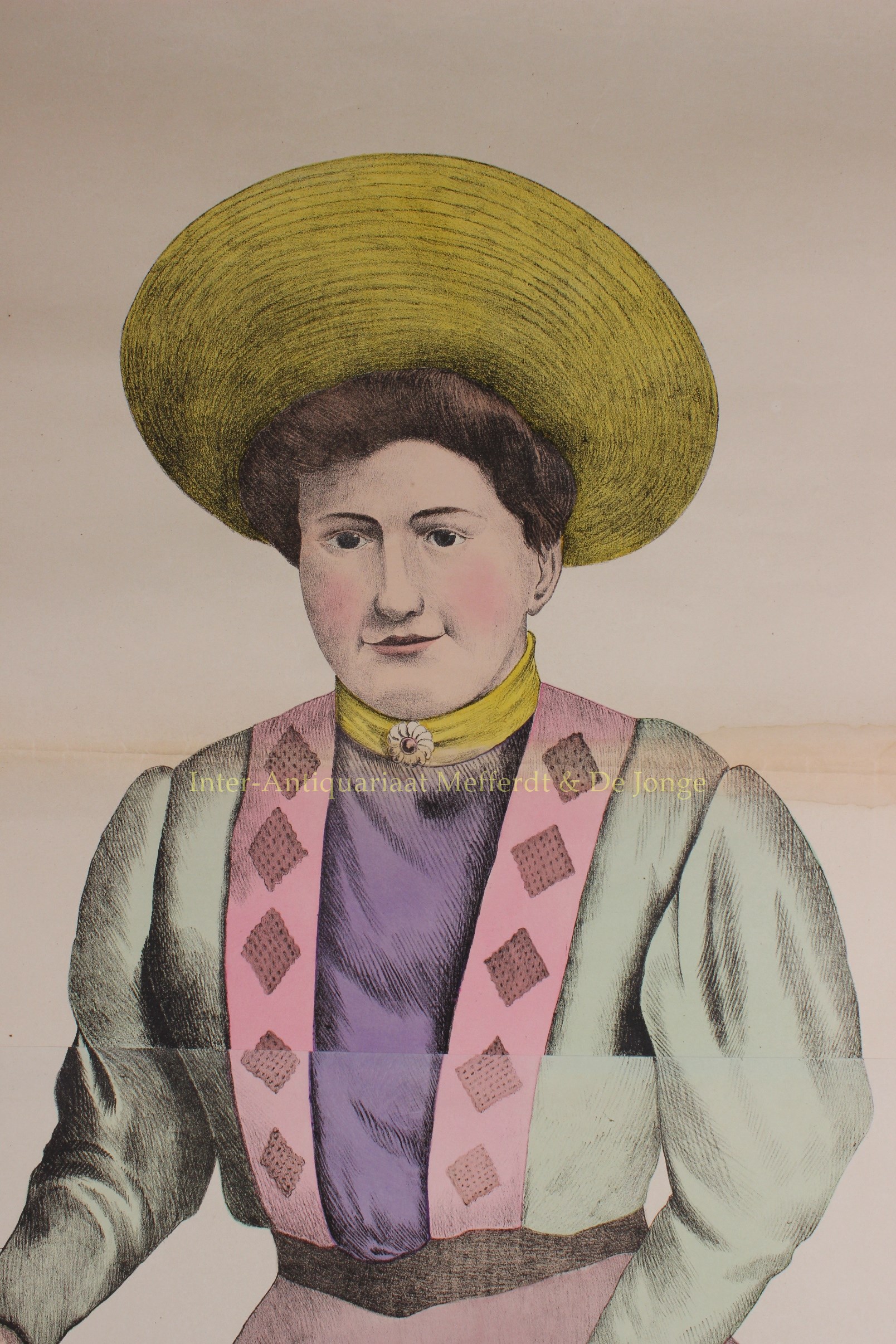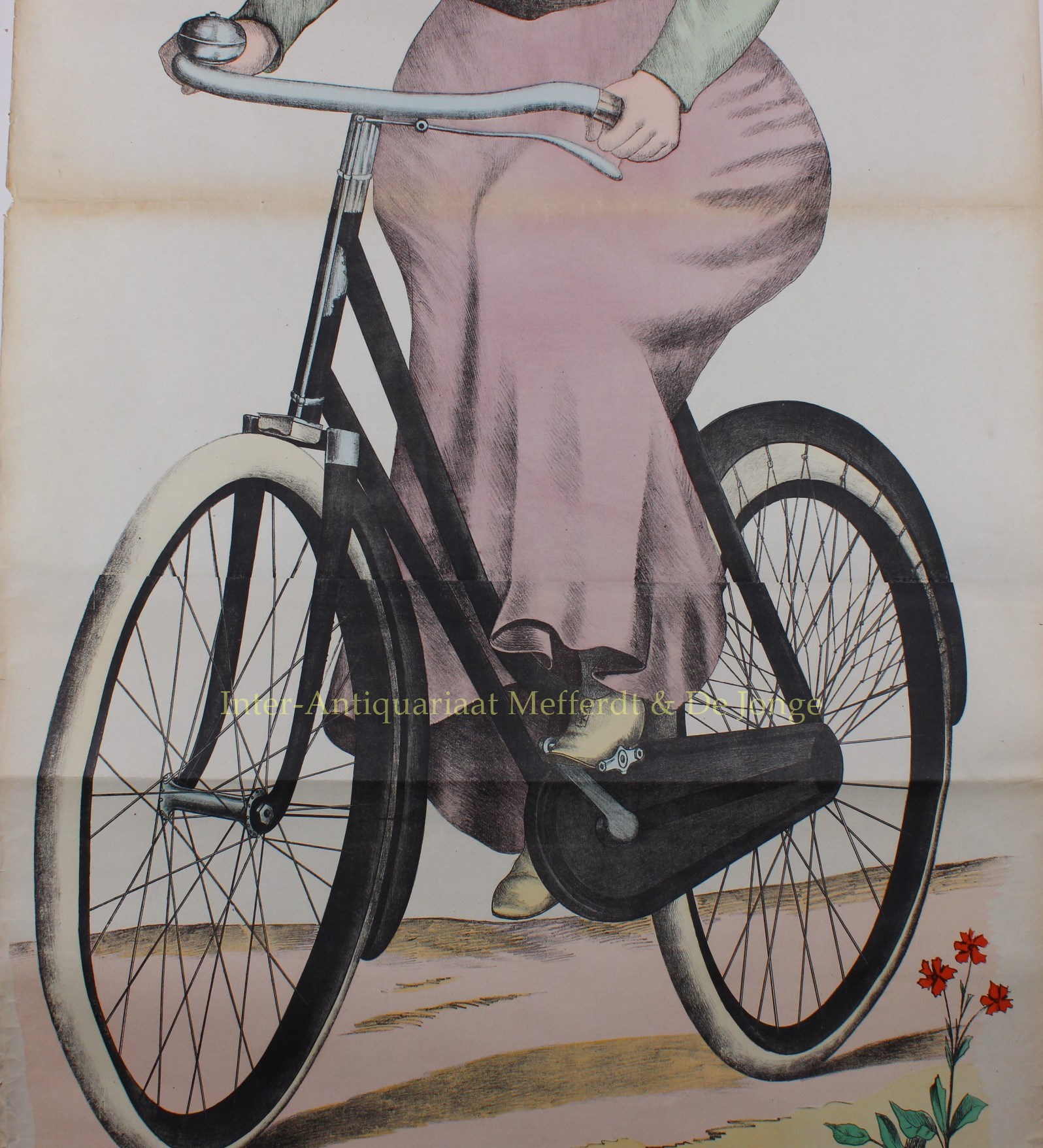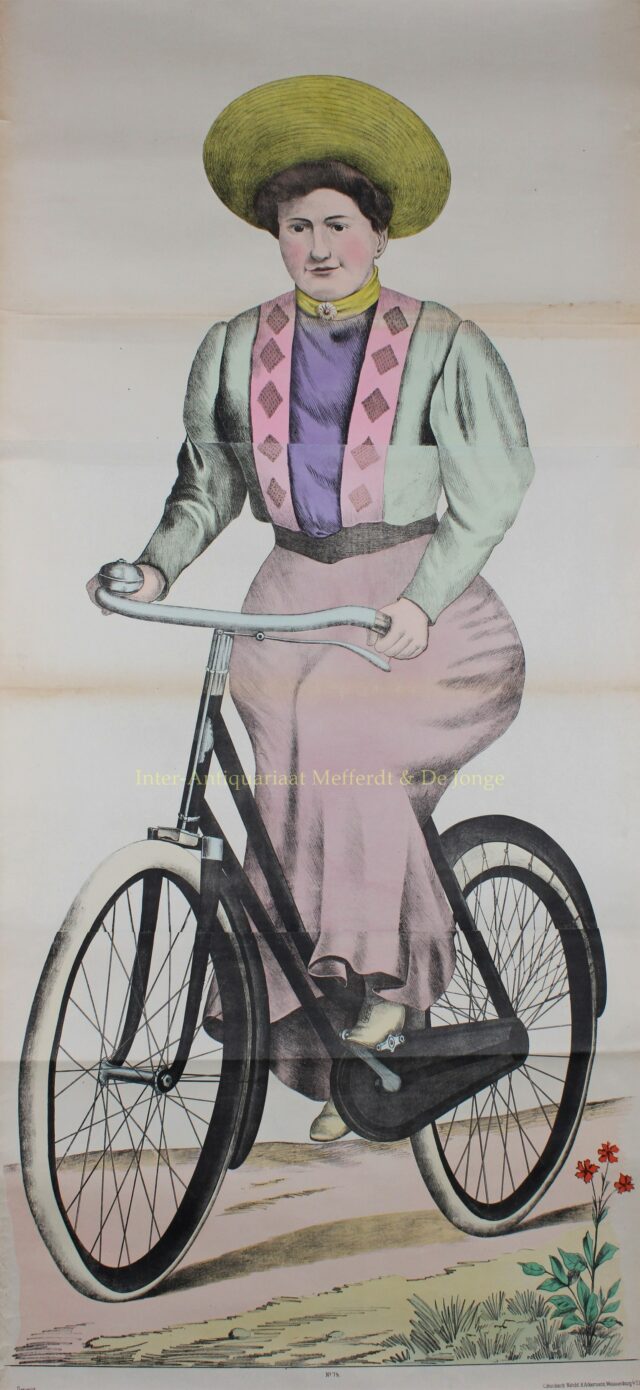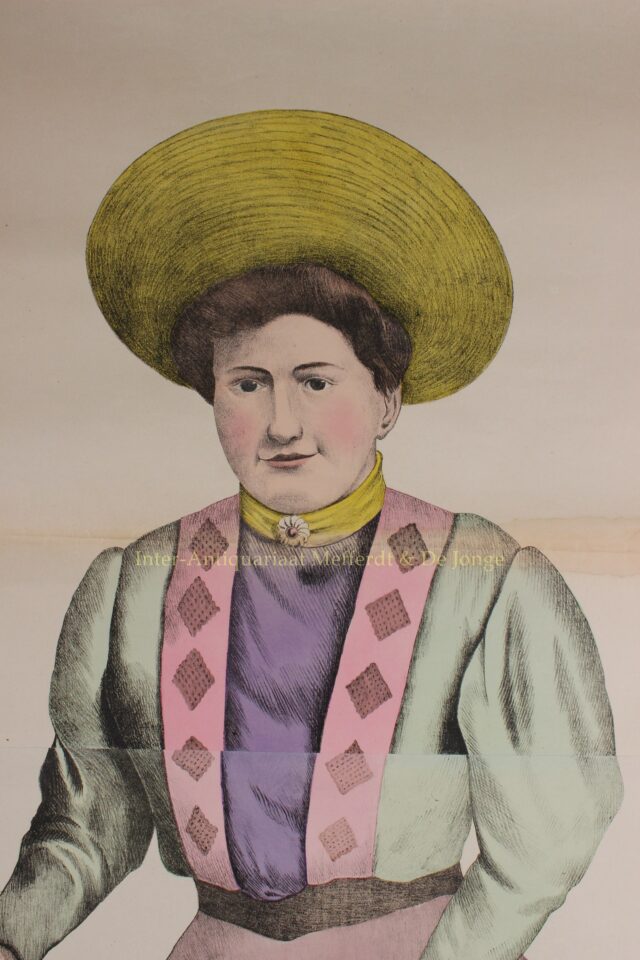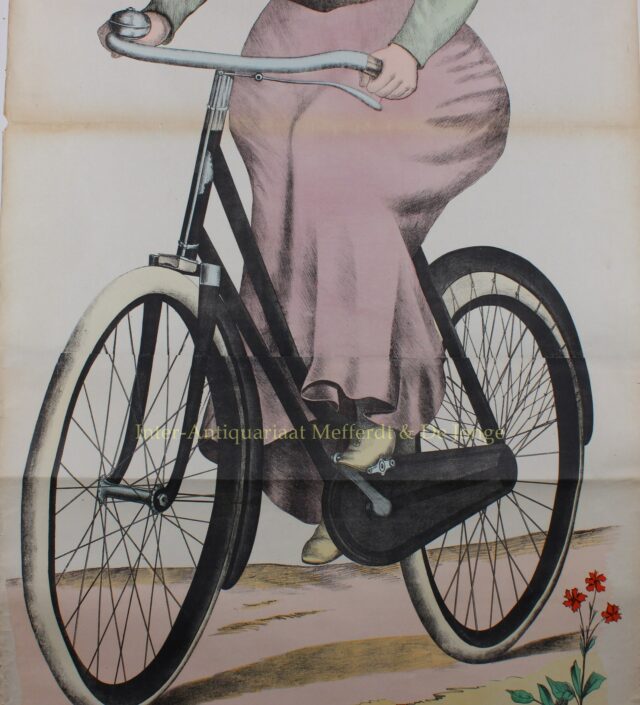The cyclist – Ackermann/Burckhardt (Weissenburg), 1906
CYCLING THROUGH THE BELLE ÉPOQUE Folk print, lithograph consisting of three mounted sheets, made in 1906 by René Ackermann in…
Read more€950
CYCLING THROUGH THE BELLE ÉPOQUE
Folk print, lithograph consisting of three mounted sheets, made in 1906 by René Ackermann in Weissenburg. Size: approx. 163 x 75 cm.
In 1885, a bicycle is invented in England that was safer and better than any before it. In 1888, John Dunlop introduces pneumatic tyres. The ladies’ bicycle with a step-through frame, comes into vogue in the mid-1890s. The golden age of cycling dawned, which would last until the unstoppable rise of the automobile outstripped the popularity of all other forms of transport.
Cycling provided women with a newfound sense of mobility and independence (especially from men). It allowed them to travel greater distances quickly and efficiently, without relying on traditional modes of transportation such as horses or carriages. This newfound freedom opened up opportunities for women and actively pursue employment outside of the house.
In 1835, bookseller Jean-Frédéric Wentzel from Weissenburg (Alsace) obtained the Brevet d’Imprimeur Lithographe that allowed him to produce popular prints in lithography. With the possibilities of the new rapid reproduction techniques and cheap labour that coloured the prints, Wentzel managed to build a successful company that sold its products all over Europe. The company is known to have marketed two hundred different prints, large and small, in the years 1860-1861 alone. By 1869, Wentzel owned 18 lithographic presses that allowed him to print up to 400 sheets per day. The 35 colourists who worked there (during a 69-hour week) had an output of as many as 107,000 sheets in year 1870. It was the largest print factory in central Europe. The company was taken over by Charles Burckhardt in 1877 and succeeded by René Ackermann in 1906. Due to competition and the emergence of new techniques such as photography, production declined after the First World War, the company closed in the late 1930s.
The depiction of the cycling lady was part of a series of life-size posters that hung for decoration in marquees or at fairs. Ephemeral prints that were lost after single use. While smaller so-called cent prints were collected from the mid-19th century onwards, very few of the large popular prints have survived.
Price: Euro 950,-

